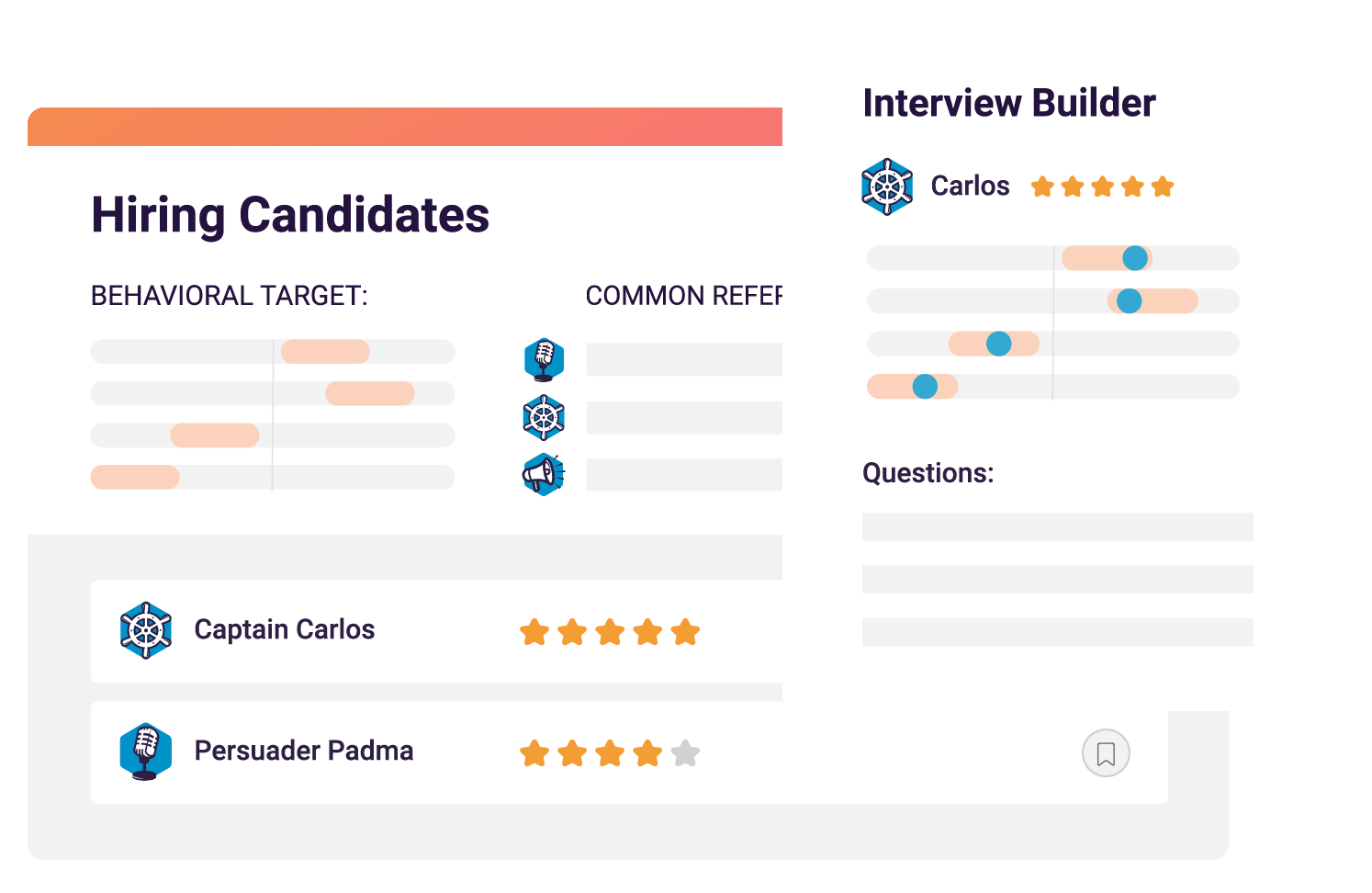Leadership challenges refer to the kinds of obstacles leaders face when guiding a team, making decisions, and/or driving organizational success. These difficulties often stem from gaps in individual personal development, team dynamics, or broader organizational issues.
Understanding and addressing these challenges is crucial for anyone aiming to inspire, motivate, and effectively manage a group of people. In this guide, we’ll explore the most common internal and external challenges leaders may face, along with actionable strategies and leadership skills to overcome them.
Related: Effective leadership: leading by example
What exactly are leadership challenges?
Before we dive in, let’s clarify precisely what we mean by leadership challenges.
Leadership challenges can be internal (like personal struggles with confidence or prioritization), or external (navigating team dynamics or organizational changes). For example, an internal challenge might involve overcoming self-doubt, while an external challenge could involve leading a team through a period of upheaval or uncertainty. Both types require employing different strategies that are crucial to becoming an effective leader.
By understanding the different kinds of challenges that might emerge—and how they’re most likely to arise—leaders can better prepare themselves to address these issues head-on, guiding their teams to success.

Give your managers the tools to become outstanding leaders.
The best managers are developed and equipped with the right tools to help them grow—to navigate difficult conversations and support the growth of those around them. Strengthen your management and strengthen your business with PI for managers.
Most common internal leadership challenges
Internal leadership challenges are largely personal, psychological hurdles that can have detrimental effects on leaders and teams alike. Proactively addressing these obstacles is crucial for ensuring growth and driving your personal leadership development.
Here are some of the most common internal challenges leaders face, along with their potential impact on leadership effectiveness.
Staying humble
A strong (but measured) sense of ego can be a tremendous tool in the hands of the right leader. However, left unchecked, it can also become their own worst enemy. Staying grounded around your employees ensures you remain approachable and respected.
Self-confidence
Confidence, while key to leadership success, can be notoriously difficult to sustain over time. Whether it’s dealing with imposter syndrome, fear of failure or inadequacy, a lack of confidence can hinder decision-making and leadership effectiveness.
Execution
Execution is about getting things done. A good leader must not only prioritize tasks, but follow through consistently. Knowing when to delegate and when to ask for help is equally important to ensure that everything runs smoothly in the corner office (and beyond).
Work-life balance
Balancing professional responsibilities with personal well-being is a widely cited challenge. Maintaining a healthy work-life balance is critical for sustained leadership success, while avoiding burnout and exhaustion in the long run.
Keeping yourself motivated
Maintaining your leadership skills can be demanding—it’s why it’s important to keep yourself motivated. Keeping your focus on the bigger picture and maintaining a growth mindset can help you stay energized and inspire your team.
Being vulnerable
Vulnerability in leadership is a strength, not a weakness. By openly expressing your challenges and uncertainties, you create a more authentic and trusting relationship with your team—who will, hopefully, read the room and follow your example in kind.
Handling different perspectives
Navigating diverse personalities and interpersonal differences is a cornerstone of the leadership experience. Effective leaders are those who can manage different perspectives with empathy, adaptability, and clear communication—and not feel the need to double down on their own views when challenged.
Related: 6 essential leadership practices for success

Most common external leadership challenges
External leadership challenges are obstacles that arise from outside a leader’s personal sphere and often involve managing teams, resources, and organizational change. Addressing these challenges effectively is key to driving team success and achieving broader goals. Let’s take a look at the most common external challenges and how they may impact leadership.
Keeping your team motivated
It’s not just about self-motivation: keeping your team consistently inspired is also a recurring challenge for leaders. It’s essential to maintain high energy levels and morale within your team dynamic—not only to avoid burnout, but to keep everyone aligned with broader organizational goals and initiatives.
Change management
Change management involves guiding your team through transitions, whether adapting to new technologies, restructuring, or shifting strategies. Effective leaders must understand the purpose of change, communicate it clearly across the organization, and ensure an overall smooth transition.
Communication
Clear and effective communication skills are non-negotiable in a leadership role. Leaders must communicate through different channels and across various levels within the organization, and ensure all relevant stakeholders are on the same page. This can often include delivering difficult news in a way that is both empathetic and transparent.
Employee development
While compensation is important, employees look to their leaders for far more than just a paycheck. Developing, coaching, and mentoring your team members’ professional development is crucial for maintaining a skilled and motivated workforce. Leaders must invest in everyone’s growth to build a stronger, more capable organization.
Resource management
Managing resources and people—particularly their responsibilities and priorities—is central to effective workplace leadership, and one of the biggest headaches that first-time managers can have. This involves delegating tasks, providing guidance, and distributing feedback. Leaders must balance empowering their team with autonomy while also tracking and reporting on performance.
Operational inefficiencies
Leaders can frequently face headaches when business processes or operations are not fully optimized. Identifying and improving these inefficiencies across teams is essential to streamline workflows and increase productivity.
Conflict management
Conflict management, among a leader’s biggest challenges, is about resolving disagreements within the team or across departments. Leverage your leadership skills to achieve a resolution where all parties feel satisfied, allowing the team to move forward without lingering tensions.
Crisis management
Crisis management is the leadership challenge that deals with tackling unfolding, unforeseen events that could impact the organization’s reputation, operations, or security. Leaders must remain calm, communicate clearly, and project a quiet confidence to guide their teams through challenging times. Staying personable with your team can go a long way when navigating an ongoing crisis.
DEI
Diversity, equity, and inclusion (DEI) are essential for creating a fair and supportive workplace, where team members can thrive and contribute their best work. Being a great leader means understanding why DEI matters, and how to integrate its tenets into their own team culture to foster innovation, employee engagement, and retention.
Managing a remote team
With more companies than ever operating remotely, leaders increasingly face the challenge of managing geographically dispersed teams. Effective communication through specific channels, while establishing clear expectations, is key to ensuring alignment and productivity.
Also, remember that your team members don’t necessarily need to work in a physical office to experience burnout. When managing remote workforces, The Center for Creative Leadership recommends going the extra mile to enhance human connections. Try to facilitate opportunities for those who don’t interact with each other on a daily basis to discover and celebrate their shared interests.
Business challenges and decisions
Leaders must navigate a myriad of general business challenges, such as problem-solving after a poor quarter or high turnover rates. Strategic decision-making is crucial, especially when high-performing results are crucial for organizational success.
How to cope with these top leadership challenges
Leadership challenges can be daunting, but with the right approach, they can almost always be managed effectively. Below, we’ve outline strategies for addressing some of the most common challenges leaders face—whether they relate to personal growth, team management, or managing across an organization.
Leadership challenges related to personal growth
Personal growth challenges often revolve around self-awareness and continuous improvement.
Effective leadership entails recognizing areas where they can develop and take actionable steps to grow. Being clear about your role—while understanding your strengths and weaknesses—can help set realistic expectations for both yourself and your team. That kind of clarity will not only boost your confidence, but also empower you to lead with greater purpose and effectiveness.
Leadership challenges related to team management
Team management requires a delicate balance of authority and collaboration—effective leaders provide clear guidance and feedback, but also recognize the value of input from their team.
Foster a work environment in which members are free to give and receive constructive feedback, and it’ll likely lead to a culture of continuous improvement and mutual respect. This approach not only enhances team performance, but fosters a more engaged and motivated workforce.
Leadership challenges related to managing across an organization
Managing across an organization involves aligning your team’s goals with the broader strategic objectives of the company.
Leaders must navigate interdepartmental dynamics and ensure that communication remains clear and consistent. By establishing strong communication channels and regularly engaging with other departments, you can ensure your team’s efforts always remain in sync with organizational goals. That kind of alignment is not only key to driving success within your team, but across the entire organization.
Become a stronger leader with PI.
PI Perform is designed to help you overcome the most common leadership challenges and become a better leader. Whether you’re facing obstacles in personal growth, team accountability, or simply want to run more efficient meetings, our tools provide the insights and support you need to succeed.








